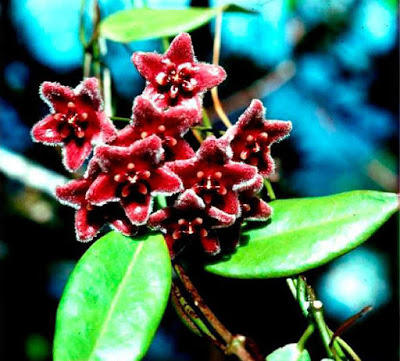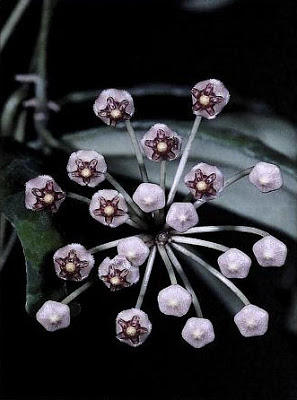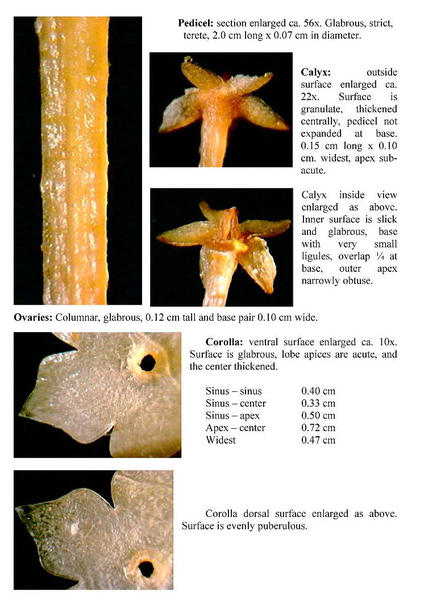
This is a cross-post from the Biodiversity Heritage Library's blog: see it here.
Robert Dale Kloppenburg is definitely a dedicated botanist. As of January 2018 - when he celebrated his 97th birthday - he has named 234 plant species, mainly in the flowering genus Hoya, which has been his focus for close to forty years since his retirement.
Kloppenburg and the International Hoya Association, of which he is president, have made some generous contributions to the Biodiversity Heritage Library, with funding of the Expanding Access to Biodiversity Literature project. Currently available on BHL are:
- Fraterna : Official Bulletin for International Hoya Association (1991-2006): Contributed by International Hoya Association and digitized by Harvard University Botany Libraries and The New York Botanical Garden, LuEsther T. Mertz Library.
- Hoya New (2013-2017): Published and contributed by Robert Dale Kloppenburg.
Hoya New presents new species descriptions with photos and identification keys.
Also currently available on BHL are Kloppenburg’s titles:
- Ganges Hoya (2008)
- Malaysian Hoya Species : A Monograph (2004)
- Samoan Hoya Species : Preliminary Presentation (2014)

The International Hoya Association originated in 1988 as a USA west coast interest group which published a newsletter, first bi-monthly and then quarterly. By the end of their second year, international interest had allowed the group to expand to a non-profit with global membership. An affiliated group, ‘Svenska Hoya Sõllskapet’ based in Borlõnge, Sweden, also publishes a quarterly magazine about hoyas.
What are these plants? The association’s website describes the diverse genus:
"The genus Hoya is found in South East Asia through Australia. They are adaptable plants found everywhere from true rain forests through the slopes of the Himalayas, from semi-arid niches in Australia to damp forests. They range from vines, the most common form, to shrub-like growth. Most are epiphytic [growing on other plants]. Hoyas are in the family commonly known as milkweeds."

“What interests me most about hoyas is the vast diversity, the genetic differences and their possible evolutionary significance,” Kloppenburg shared in an interview in Fraterna. “I am of the opinion that we have collected and identified less than 1% of the wild hoya species.”
As an opening message for Hoya New, Kloppenburg explains how the work of horticultural professionals and hobbyists can contribute to the conservation of biodiversity:
"When a species is collected from the wild, I feel it is wise to identify it, propagate it, and name it. In this way it will eventually get into the commercial channels, be distributed to all those interested in the genus and thus be preserved. If in the future the species is lost through natural causes or forest destruction it will still be here on earth in your collection."
Kloppenburg began studying the genus Hoya in the Philippines in 1981. He had graduated from the University of California, Berkeley, shortly after WWII and worked as a plant breeder research agronomist. Since his retirement in 1986, he has continued to study hoyas, traveling extensively in the South Pacific. His data has been donated to UC Berkeley. In 2016, he reached out to Smithsonian Libraries to offer publications, and agreed to contribute the material to Biodiversity Heritage Library. His assistant, Karen Case, assisted with the permissions process.
“It has been a most exciting journey to be hosted with such a prestigious organization as the Biodiversity Heritage Library, for which I will be eternally grateful,” Kloppenburg says. “I hope my work will help others to become interested in hoyas, and that they will carry on the discovery of new species in the future.”
Meanwhile, he’s still studying plants in the genera Hoya, Dischidia and Eriostemma. “I no longer travel, so I depend on others, mainly in the Philippines, to send me material,” he says.
Many thanks to the International Hoya Association and to Robert ‘Dale’ Kloppenburg for their commitment to sharing biodiversity research, and to Karen Case for helping to facilitate the process.
By: Elizabeth Meyer
Library Project Assistant
Ernst Mayr Library of the Museum of Comparative Zoology

